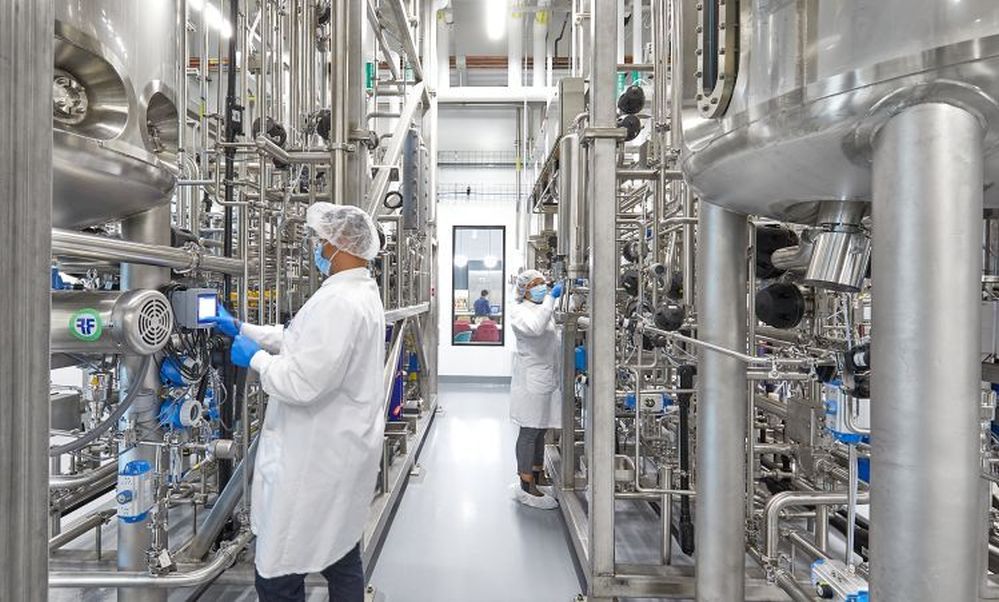UPSIDE Foods has edged closer to commercialization in the US after receiving a thumbs up from the US Dept of Agriculture (USDA) on June 12 for its ‘cell-cultivated chicken’ label, seven months after securing a green light from the FDA.
GOOD Meat, which secured the FDA’s seal of approval three months ago, told AgFunder News (AFN) it has also obtained USDA approval for its cultivated chicken labels in the US, getting the green light on June 8.
Both companies must now obtain a grant of inspection from USDA for their production facilities in California before they can legally sell their products in the US.
The FDA regulates cell collection, banking, growth, and differentiation for cultivated meat and poultry; the USDA handles regulatory oversight once the cells are harvested and through the processing and labeling stages. While USDA has not yet issued rules on how best to label cell-cultured meat products, it has agreed to review labels submitted by startups in the space before the rulemaking process is completed on the understanding that they may need to be changed down the road to comply with its final regulations.
Assuming it secures the grant—and it doesn’t have an exact timeline—UPSIDE’s products will bear the USDA mark of inspection like any other meat product, said the company, which plans to debut its cultivated chicken filets at Dominique Crenn’s upscale Bar Crenn restaurant in San Francisco.
A pivotal year for cultivated meat
The news comes at a pivotal time for the cultivated meat industry as UPSIDE and other startups face questions over the scalability of their technology and industry stakeholders wait with bated breath to see if US consumers are sufficiently enthused by the first wave of products to motivate jittery investors to keep funding the category.
The best-funded player in the space, UPSIDE Foods closed a $400m series C round last year, bringing its cumulative funding to $608 million. Its pilot facility in Emeryville can produce 50,000 lbs of finished product a year, with a future capacity of over 400,000 lbs/year. The series C round—led by Temasek and the Abu Dhabi Growth Fund and backed by Cargill, Givaudan, and Tyson Foods—will fund a larger scale facility with a production capacity of “tens of millions of pounds.”
Is UPSIDE Foods’ whole cut technology scalable?
COO Amy Chen—a former PepsiCo executive who joined the team in 2021—said that the first products will be whole-cut chicken products, which are manufactured in a two-step process. Cells are first proliferated and then triggered to differentiate into muscle cells and connective tissue, forming thin sheets of tissue that adhere to the surface of the vessels.
She confirmed that right now, this process is still taking place in two-liter flasks, and is not operating at scale.
“We’re working on a number of processes that would allow us to scale this much larger, but I would say for us to go to full scale commercial on the whole cut products will take us a bit of time. We have processes that are working now, but we have not yet greenlit those for full commercial scale.”
The 2,000 liter vessels in UPSIDE’s production facility are being used to produce cell biomass [rather than mature tissue] that can be added to plant-based meat to create blended products such as nuggets and sausages, said Chen.
‘Conflicted’ carnivores: ‘They love the product [meat], but not the process [mass slaughter]’
As to the consumer appeal of cultivated meat, she said: “If anything, the demand for meat is continuing to increase. But we have conflicted carnivores. They love meat, and plant-based or other alternatives on the market are not good enough to cause them to change their habits. But they don’t feel great about eating meat. They love the product, but not the process.
“So what I think is really exciting about cultivated meat is that it resolves that paradox.”
UC Davis study: ‘Really every single assumption on there is off by a very large amount’
But is cultivated meat better for the environment, as well as for animals?
Asked about a recent (not yet peer-reviewed) UC Davis study claiming that greenhouse gas emissions from cultivated beef could be up to 25% higher than regular beef, Chen said: “We’ve gone through that that paper, but really every single assumption on there is off by a very large amount, from assumptions around the level of purification that’s required [for some cell culture media components], to the amount of media needed, the productivity of the process.
“At large scale, we are confident that our process is better [for the environment] based on land and water use and greenhouse gas emissions.”

CELL LINES: According to a scientific memo released by the FDA, UPSIDE is isolating cells either from adult chickens (a myoblast cell line derived from muscle tissue) or from mid-stage fertilized chicken eggs (a “fibroblast-like cell line”).
UPSIDE immortalizes its cells such that they will proliferate indefinitely and it doesn’t have to keep going back to the source animal. This is achieved either through selection in culture or through genetic engineering (the “introduction of a cisgene expressing chicken telomerase reverse transcriptase),” explains the FDA. “The gene is already present in the chicken genome and is expressed in some chicken cells, including muscle cells.”
The protein expressed by the gene is “nontoxigenic, is not an allergen, is not heat-stable or resistant to digestion, and would be digested and metabolized like any other food protein upon consumption.”
MEDIA: While UPSIDE Foods has developed animal component free growth media, the FDA describes the use of bovine serum albumin in the growth media, something Chen claims it will ultimately replace with fully recombinant albumin.
PRODUCTION PROCESS: The antibiotic-free production process described by the FDA to make whole cut products is two-pronged. The cells are cultured by first increasing total cell numbers in a suspension culture proliferation phase, followed by a subsequent differentiation and maturation phase.
In this second phase, the cells “are encouraged to differentiate and assume characteristics of muscle cells (myocytes) and connective cells (fibrocytes) through adherence to the surface of the culture vessel [rather than to edible scaffolding] and through introduction of additional medium components… during this phase the surface-adherent cells also adhere to each other to form a multicellular tissue.”
The cells are harvested in the form of sheets of cells washed from the surface of the culture vessel into a collection basin, followed by subsequent washing and moisture adjustment in a temperature-controlled environment.
NUTRITION: According to the FDA, UPSIDE’s “batch data indicated elevated folate levels relative to conventional ground chicken.” However, the level is “much lower” than levels of folic acid authorized by regulations, says the agency.

Further reading:
Cultivated meat startup Higher Steaks raises $30 million series A, rebrands as ‘Uncommon’
🎥 Meatable CEO: ‘We believe we have the fastest process in the field to make cultivated meat’




